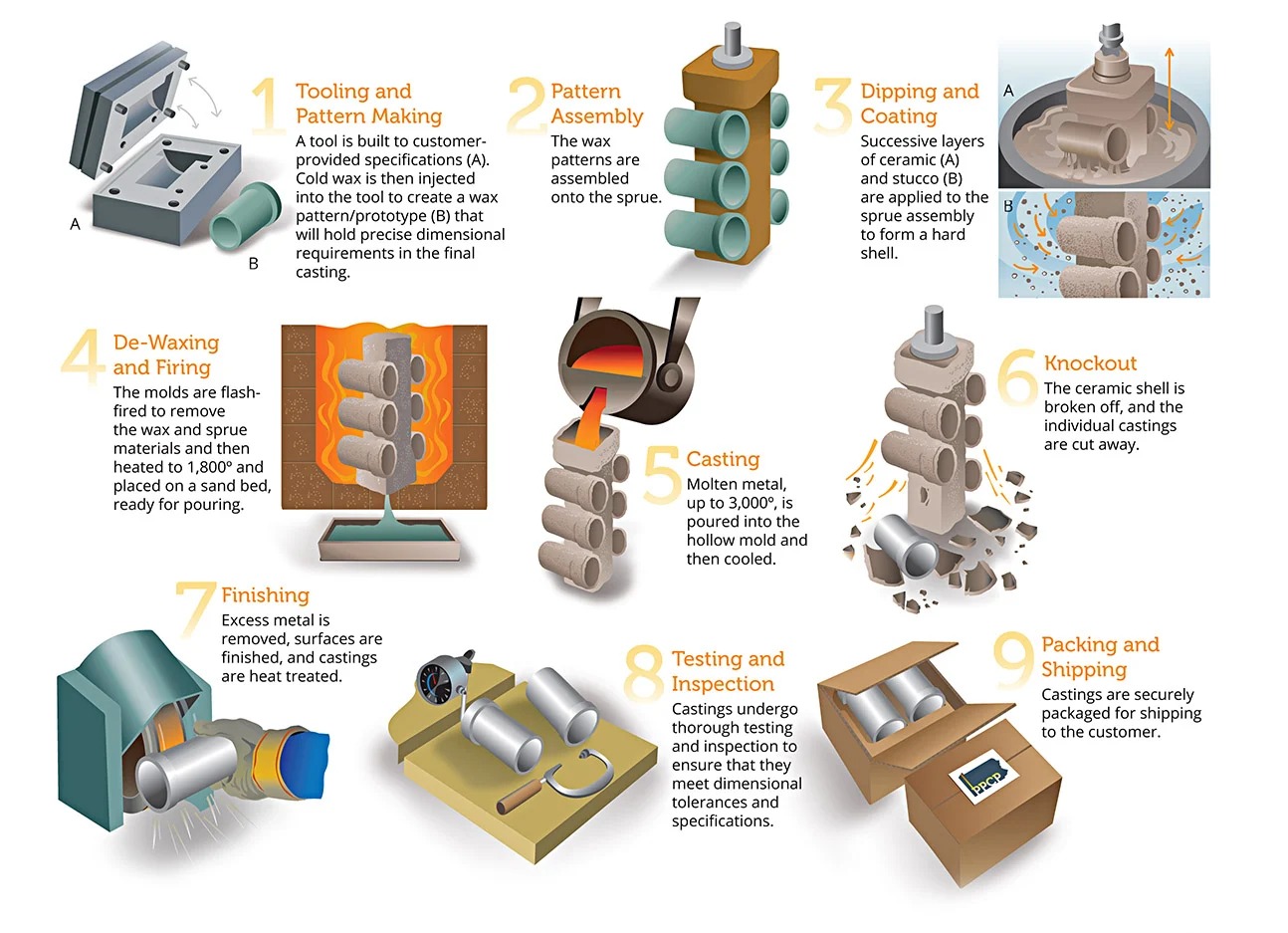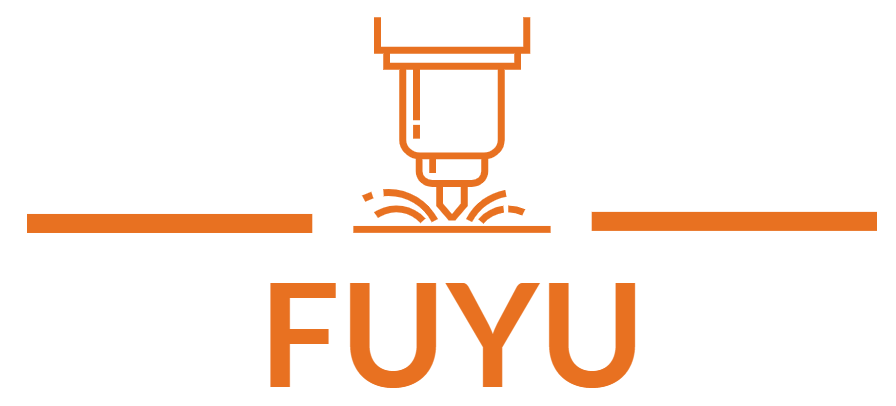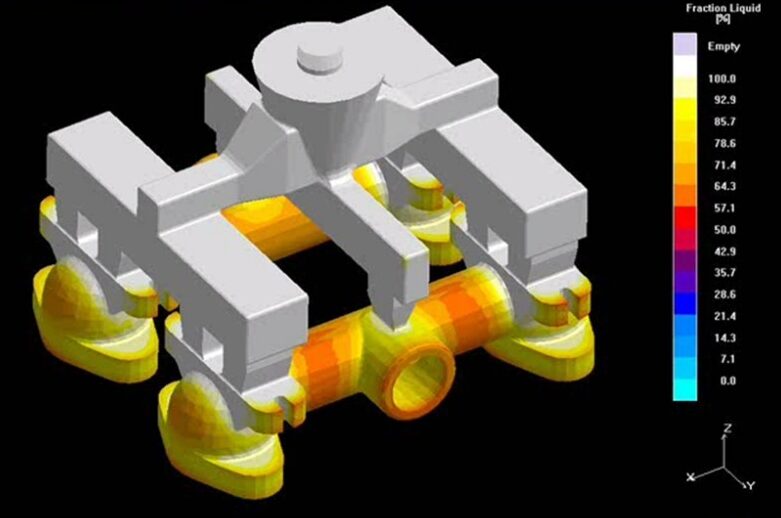Investment Casting Explained: The Process, Benefits, and Practical Applications
Investment casting, also known as lost wax casting, is a time-honored technique with roots stretching back to the Bronze Age, a period marked by significant advancements in metalworking. In contemporary practice, investment casting plays a pivotal role, particularly in the realm of jewelry creation. Beyond aesthetics, the method is crucial for fabricating complex shapes and hollow structures, such as turbine blades, with meticulous precision. To facilitate mass production, CNC machined steel molds are employed, allowing for the swift casting of wax models and ensuring consistent replication unattainable with handcrafted prototypes. This discussion will delve into the mechanics of investment casting, highlight its unique benefits, and present instances of its application.
What Is Investment Casting?
Investment casting stands out as a manufacturing process renowned for producing metal components with exceptional detail, high accuracy, and smooth surface finishes. This method is particularly advantageous for crafting intricate parts that require precise dimensions and complex geometries.
Industries such as aerospace, automotive, jewelry, and medical technology frequently rely on investment casting for its ability to produce precision components. The process is celebrated for its versatility with various metals and alloys, and its capability to create designs with challenging internal structures, thin walls, and intricate detailing.
Why It’s Called Lost Wax Casting
The term ‘lost wax casting’ comes from the unique process of using a wax pattern that is eventually melted away. The ‘investment’, or the application of a refractory material, is applied to the wax model. After drying and being subjected to high temperatures, the wax is melted out, leaving behind a durable, hollow form that precisely mirrors the original wax model. This space is then filled with molten metal, resulting in the ‘loss’ of the original wax shape.
Differentiating Investment Casting from Other Casting Techniques
Casting processes universally involve pouring molten metal into a heat-resistant mold to form a part, but the way in which these molds are created distinguishes one method from another. Die casting employs hardened steel molds machined with high precision, while sand casting uses a combination of sand and binders to shape around a master pattern. Investment casting, on the other hand, creates its mold by coating a sacrificial pattern with a refractory material that is baked in a kiln.
The level of precision and detail achievable varies across these methods. Die casting can produce highly detailed components, especially when pressure is applied to compensate for metal shrinkage. Sand casting, while versatile, is less precise and suitable for coarser details. Investment casting, however, is known for its fine detail and precision without incurring the high initial costs associated with die casting tools.
The Core Objective of Investment Casting
Investment casting’s core objective lies in its ability to manufacture metal parts that are detailed, complex, and precise, with outstanding dimensional accuracy and surface finishes. The criticality of these attributes varies with the application’s specific requirements. This technique is favored for producing components that are geometrically challenging to create using other methods, demand fine details, thin walls, and necessitate a degree of complexity and precision unattainable by alternative processes.
Key Industries Leveraging Investment Casting
Investment casting is predominantly utilized in sectors where detail, complexity, and precision are paramount, especially when production volumes don’t justify the expense of die casting. The aerospace sector employs it to create intricate gas turbine components, such as turbine blades and fuel system parts. In the automotive industry, it’s used for crafting specialized components for low-volume and performance vehicles, as well as for heavy machinery and agricultural equipment. The medical field relies on investment casting for fabricating components for MRI machines, mobility aids, hospital furniture, surgical tools, and other critical equipment.
The Investment Casting Mechanism
Investment casting operates by applying coatings to a pattern prior to mold creation or directly to the mold post-firing. These coatings serve multiple purposes: they act as a barrier to prevent oxidation and contamination between the mold material and the molten metal, reduce marking, and aid in the release of the final casting. Thermal barrier coatings can be used to manage the cooling rate and prevent rapid solidification, while anti-penetration coatings minimize the melt’s penetration into the refractory material, enhancing surface quality.
Investment Casting Process Breakdown
The investment casting process unfolds through several meticulous steps:
1. Wax Pattern Creation and Assembly: Wax patterns are crafted by hand for unique items or through steel tools for high-volume production. 3D printing has emerged as a cost-effective method for producing small wax parts, particularly beneficial during iterative development phases.
2. Wax Pattern Mountin: A feeder system, including a sprue and channels, is attached to the wax pattern to facilitate successful molten metal flow during casting. Multiple parts can be cast simultaneously by connecting individual cavities to a central pouring point.
3. Mold Shell Formation: The wax pattern assembly is dipped into a slurry to form the initial coating, followed by the application of a stucco layer to stabilize it. This process is repeated to achieve the desired mold thickness, with adequate drying time between layers.
4. Wax Removal: The mold is baked to eliminate the wax and solidify the refractory coating, leaving a clear and open cavity that mirrors the original wax pattern.
5. Metal Melting and Casting: Molten metal is poured into the mold through the sprue until it fills the entire structure, as indicated by the metal’s appearance at the upper vents.
6. Casting Finalization: Once cooled, the refractory material is carefully removed to reveal the metal casting. The cast part is then separated from the feeder system and undergoes finishing processes like grinding, sawing, and polishing to restore its surface.

Optimal Materials for Investment Casting
Investment casting is compatible with a diverse array of materials, each offering unique benefits for the creation of precision parts:
1. Carbon Steel: This group of alloys is highly regarded for its versatility across multiple industries. Investment casting harnesses carbon steel’s potential to accurately form parts with minimal need for additional machining, making it ideal for components that demand intricate designs and consistent replication.
2. Aluminum Alloys: Aluminum and its alloys are favored in investment casting for their advantageous properties, including a low melting point and reduced shrinkage during solidification. While the cost may be higher, aluminum is perfect for high-value parts where precision and a higher grade of finish are required.
3. Brass: Brass is a popular choice for both functional and aesthetic castings, offering excellent fluidity and a naturally appealing finish. The challenges of casting with brass, such as potential oxidation, can be mitigated through careful process management, resulting in high-quality, corrosion-resistant components.
4. Glass: Although less common, glass can also be investment cast, primarily for artistic or decorative objects. The process involves melting powdered glass in a mold, demanding meticulous attention during both the casting and the removal stages to preserve the delicate nature of the material and the intricate designs it forms.
5. Stainless Steel Alloys: Casting with stainless steel can be challenging due to the material’s tendency to react with mold materials, potentially affecting surface finish. However, with the right expertise in alloy selection and process control, the benefits of stainless steel — such as durability and corrosion resistance — can be fully realized in the final product.
Duration of Investment Casting Process
The time required to complete an investment casting cycle varies based on multiple aspects such as the type of material being cast, the intricacy of the design, and the equipment utilized. Specifically, for smaller castings weighing less than a kilogram, the process typically spans from 2 to 5 days until the flask is prepared and ready for casting.
Precision Level of Investment Casting
Investment casting is renowned for its ability to replicate patterns with remarkable precision, contingent upon the meticulous preparation of the flask. The fidelity of the pattern is largely reliant on its production method. To enhance the wax pattern’s accuracy, various techniques can be employed. For instance, fine-tuning the injection pressure of the wax when using a mold can help minimize dimensional discrepancies. Additionally, critical sections of the pattern may undergo post-processing machining or coining — a method where the pattern is press-molded between two precision-machined steel dies for enhanced detail and accuracy.
Determinants of Dimensional Precision in Investment Casting
1. Casting Design: The design, specifically the wall thickness of the casting, plays a crucial role in its dimensional accuracy. Excessively thick walls may lead to increased shrinkage, whereas too thin walls might have the opposite effect. An overly high free systolic rate can hinder shrinkage, affecting the casting’s dimensions.
2. Material Choice: The choice of casting material significantly impacts the outcome. For instance, materials with lower carbon content exhibit reduced shrinkage rates, influencing the final dimensions of the casting.
3. Wax Injection Conditions: The temperature and pressure at which the wax is injected are critical factors affecting the quality of the casting. These parameters directly influence the mold’s fidelity to the original design.
4. Shell Composition: The selection of materials for creating the casting shell can affect shrinkage rates. Materials like zircon sand, known for their low expansion coefficients, are preferred to minimize dimensional changes during the casting process.
5. Shell Heat Treatment: The heating process of the shell must be carefully controlled to avoid negative impacts on its expansion and, consequently, on the casting’s dimensional accuracy.
6. Molten Metal Temperature: The temperature at which the metal is poured or injected plays a pivotal role. High temperatures can lead to defects such as coarse grains, while low temperatures may impair the metal’s fluidity. The optimal temperature varies depending on the alloy and is crucial for minimizing shrinkage by maintaining a consistent injection temperature. Managing this temperature not only ensures energy efficiency but also contributes to the production of precise and accurate cast parts.
Benefits and Limitations of Investment Casting
Benefits:
Investment casting is esteemed for its versatility and precision, offering several key benefits:
1. It adeptly handles complex shapes, thin-walled structures, and intricate details, providing considerable design flexibility.
2. Castings produced through this method exhibit high dimensional accuracy and consistency, especially when using standardized patterns.
3. Surface finishes from investment casting are typically of high quality, with opportunities to fine-tune the process for superior surface detail.
4. A wide array of materials can be used for casting, such as various metals, alloys, ceramics, and even glass, allowing for diverse applications.
5. The inherent characteristics of the raw materials are well-preserved in the final cast product.
6. Material efficiency is high due to the recyclability of the gating systems, except in the case of thermosetting resins.
7. It allows for the integration of multiple parts into a single casting, optimizing assembly efficiency and reducing potential points of failure.
8. Compared to die casting, the tooling investment is more economical.
9. Generally, there is less need for additional machining or finishing compared to other casting methods like sand casting.
Limitations:
Despite its advantages, investment casting also presents certain challenges:
1. Manual processes involved in investment casting can lead to higher costs compared to more automated methods like sand casting.
2. Per-unit costs for components are greater than those produced by die casting, particularly for larger volumes.
3. The multi-step nature of investment casting introduces multiple opportunities for errors.
4. The size and mass of castings are more restricted than in sand casting, limiting the scale of producible parts.
5. On a per-unit basis, costs are steeper than sand casting for single items, but this cost difference decreases with higher production volumes and automation.
6. While there are few material constraints, each choice must be carefully considered to ensure process compatibility.
Cost Considerations of Investment Casting
While investment casting parts are generally not considered “inexpensive,” they offer significant value for money, making them a cost-effective solution under certain conditions:
1. Investment casting proves economically viable for parts that would require complex assembly processes otherwise.
2. For designs that demand intricate shapes not achievable through single-step, net-shape processes, investment casting stands as the preferable option.
3. In scenarios where the emphasis on quality and precision outweighs cost concerns, investment casting is chosen for its commercial viability.
Applications of Investment Casting
Investment casting holds a place of high regard in various applications, notably for:
1. Crafting complex, hollow turbine blades from advanced alloys for use in gas and steam turbines.
2. Producing components for both high-performance racing and standard internal combustion engines.
3. Manufacturing turbocharger radial turbines.
4. Creating unique jewelry and decorative pieces in both singular and limited runs.
5. Fabricating dental implants on a large scale, as well as bespoke crown and bridge metalwork.
6. Developing custom-fit orthopedic implants.
7. Producing critical firearm components, including parts for projectile handling and firing mechanisms.
Considerations When Using Investment Casting
Cost of Tooling:
Investment casting tooling can be costly for small production runs. Alternatives like stereolithography (SLA) or 3D printed patterns may offer cost savings, particularly for limited quantities or even single items.
The initial investment in casting tools can be substantial due to the complexity of the components they create. However, this initial expense is often balanced by reduced machining and fabrication needs down the line.
Size Constraints:
Investment casting accommodates a variety of sizes, yet it has its limitations, with an upper size boundary that is typically lower than other casting methods like sand casting.
Handling Minute Features:
While investment casting excels at creating thin-walled designs, extremely small features, especially those requiring cores, can pose a challenge. Generally, the smallest achievable holes are about 1/16 inch (1.6mm) in diameter, and they cannot be deeper than 1.5 times their diameter.
Production Time:
The investment casting process involves several stages and can be lengthier than other manufacturing processes. Nonetheless, in some cases, the overall production timeline may be shorter when compared to other techniques that require extensive post-processing.
Durability and Comparison of Investment Casting Products
Longevity of Investment Casting Products:
The lifespan of products made through investment casting is not predetermined. Historical instances of investment-cast items have survived for millennia. The common causes of part failure include environmental corrosion, mechanical overload or fracture, and wear from operational use.
Robustness of Investment Cast Parts:
The robustness of parts produced by investment casting is contingent upon their design, the operational constraints they’re under, and the materials from which they’re made. For instance, brass bearing surfaces can exhibit high durability when interacting with a harder material under lubricated conditions. Similarly, an automotive suspension part can last for years with adequate lubrication but may fail prematurely if it operates in a dry, abrasive environment.
Heat Resistance of Investment Castings:
Investment-cast products can withstand high temperatures, with their heat resistance being inherently linked to the material’s properties. For example, a component made from a 316 stainless steel alloy can function reliably at temperatures up to 900 °C, provided it’s been specified and designed for such conditions.
Investment Casting vs. Die Casting:
Choosing between investment casting and die casting depends on the specific requirements of the project. Investment casting allows for more complex designs without the need for sliding parts that limit the lifespan of die-casting tools. It also accommodates high-temperature materials like stainless steel and titanium, often achieving superior surface finishes compared to die casting.
Conversely, die casting is favored for its cost-effectiveness in high-volume production and its ability to produce parts with consistent strength due to controlled anisotropy. While investment casting can be automated for large-scale production, the associated costs are significantly higher than those for die casting.
Investment Casting vs. Sand Casting:
While both sand casting and investment casting aim to create near-net-shape metal components, they differ substantially in their processes. Sand casting utilizes a packed sand mold and is better suited for parts with simpler geometries and limited internal cavities. In contrast, investment casting employs refractory materials for the mold, allowing for greater complexity in both internal and external geometries and smoother surface textures. Each process has its own set of advantages, with sand casting being simpler to set up and operate, and investment casting requiring a more intricate and skilled approach.
FAQs About Investment Casting
Q1: What is the typical lifespan of investment casting products?
A1: Investment casting products do not have an inherent expiration date. Their longevity can span thousands of years, with their life expectancy largely dependent on factors such as environmental conditions, usage, and material properties.
Q2: Can investment casting be used for large-scale production of intricate jewelry designs?
A2: Yes, investment casting is particularly well-suited for the large-scale production of detailed jewelry designs, offering high precision and the ability to reproduce complex geometries.
Q3: How does investment casting ensure durability in its products?
A3: The durability of investment-cast products is closely linked to the design specifications, operational limits, and the choice of materials, ensuring that components like brass bearings remain durable under appropriate conditions.
Q4: Are investment casting products resistant to high temperatures?
A4: Investment casting products can be highly resistant to heat, depending on the material used. For instance, certain stainless steel alloys can withstand temperatures up to 900 °C.
Q5: In what scenarios is investment casting more cost-effective than other casting methods?
A5: Investment casting is cost-effective when producing complex parts that would otherwise require extensive assembly or when the part geometry is not achievable through other one-step casting processes.
This overview has provided insights into investment casting, including its benefits, durability, and comparisons with other casting methods. For more information or inquiries about investment casting and other manufacturing services, you’re welcome to reach out to us. Fuyu offers extensive manufacturing capabilities, including casting and additional services for prototyping and production needs. Visit our website for more details or to request a complimentary, obligation-free quote.


